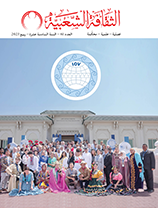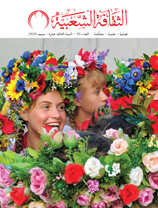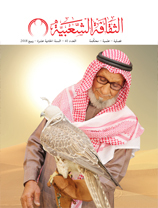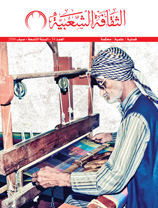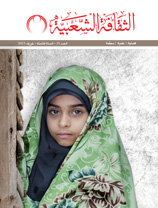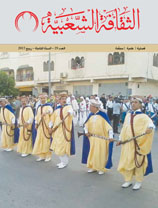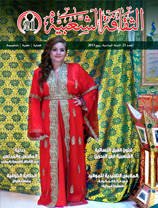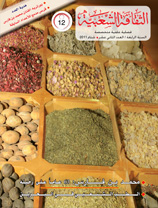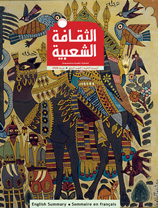The Jewellery of Naili (Djefaoui) Women
Issue 46

By Khawla Nujaimi
Jewellery has always been an important part of human life because it includes signs and symbols that reveal women’s social status and it is distinctive to a particular region. Many researchers and historians have studied jewellery to identify peoples’ social and economic lives because it reflects a people’s level of culture and artistic taste.
Naili (Djefaoui) jewellery is characterised by its variety of form and function; it serves a decorative function and the women of the Naili (Djefaoui) collect as much as possible to beautify themselves for celebrations and as a form of savings for difficult times.
The raw materials used include silver, which has been used since ancient times, and mishor (an alloy of brass, zinc and nickel). Gold, which arrived with the Ottomans, was only used by affluent families.
The Naili (Djefaoui) women used different types of jewellery as means of decoration in order to complement their beauty and reflect their identities.
Recently, we have noticed that Naili (Djefaoui) women are less interested in acquiring traditional jewellery, and craftsmen are gradually abandoning the craft. This important cultural heritage could disappear, so we must take the following steps to revive interest:
- Prepare a media plan to raise citizens’ awareness about the importance of this heritage and the need to preserve it so that it can contribute to the GDP, and organise forums at which academics and artisans can share their experiences
- Museums are a link between the past and the present, and artefacts should be displayed in very appealing ways
- Organise exhibitions about crafts and traditional industries in the state of Djelfa and throughout the nation to introduce citizens to the variety of jewellery in the region, to raise awareness about the importance of preserving this jewellery and to encourage people to buy the jewellery.











